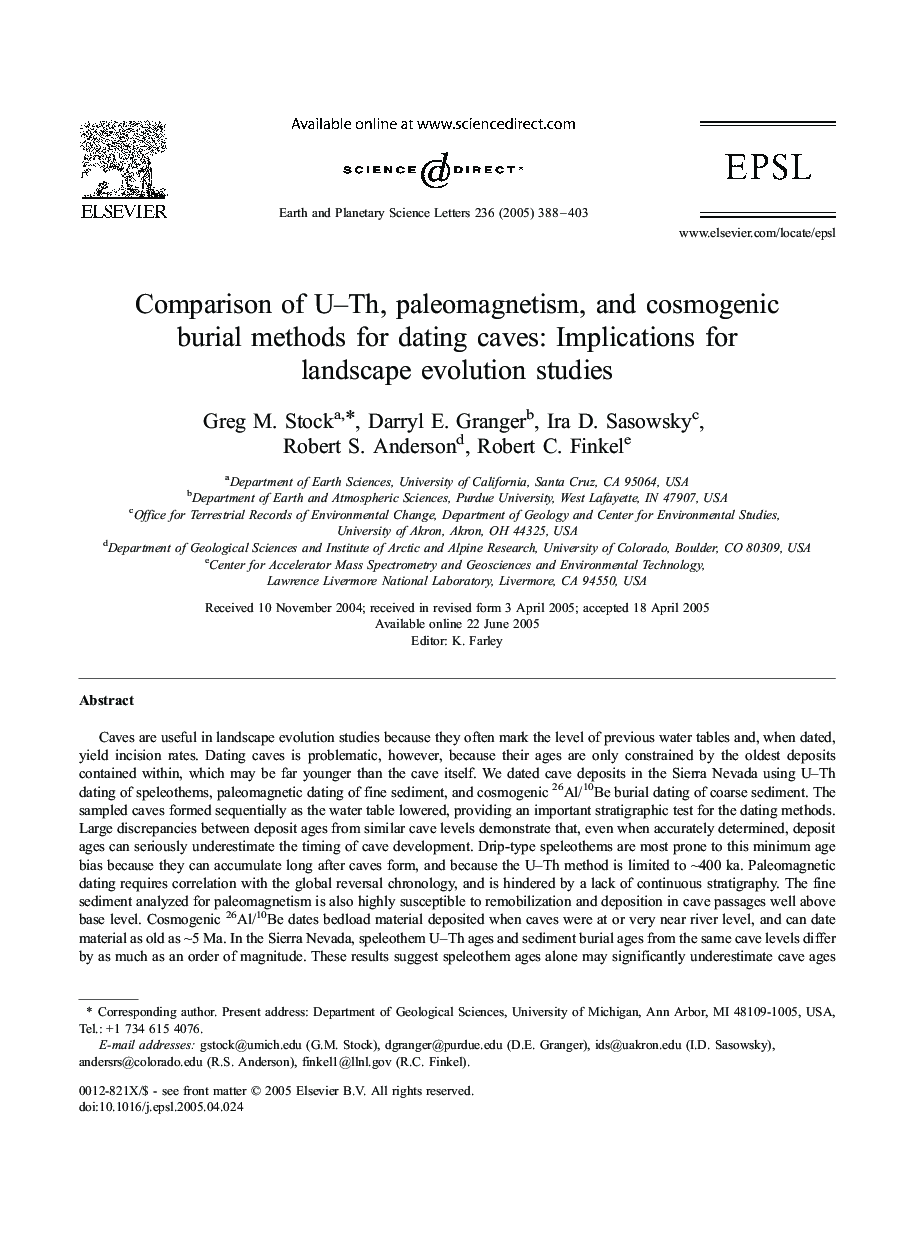| Article ID | Journal | Published Year | Pages | File Type |
|---|---|---|---|---|
| 9522155 | Earth and Planetary Science Letters | 2005 | 16 Pages |
Abstract
Caves are useful in landscape evolution studies because they often mark the level of previous water tables and, when dated, yield incision rates. Dating caves is problematic, however, because their ages are only constrained by the oldest deposits contained within, which may be far younger than the cave itself. We dated cave deposits in the Sierra Nevada using U-Th dating of speleothems, paleomagnetic dating of fine sediment, and cosmogenic 26Al/10Be burial dating of coarse sediment. The sampled caves formed sequentially as the water table lowered, providing an important stratigraphic test for the dating methods. Large discrepancies between deposit ages from similar cave levels demonstrate that, even when accurately determined, deposit ages can seriously underestimate the timing of cave development. Drip-type speleothems are most prone to this minimum age bias because they can accumulate long after caves form, and because the U-Th method is limited to â¼400 ka. Paleomagnetic dating requires correlation with the global reversal chronology, and is hindered by a lack of continuous stratigraphy. The fine sediment analyzed for paleomagnetism is also highly susceptible to remobilization and deposition in cave passages well above base level. Cosmogenic 26Al/10Be dates bedload material deposited when caves were at or very near river level, and can date material as old as â¼5 Ma. In the Sierra Nevada, speleothem U-Th ages and sediment burial ages from the same cave levels differ by as much as an order of magnitude. These results suggest speleothem ages alone may significantly underestimate cave ages and thereby overestimate rates of landscape evolution. Cosmogenic burial dating of coarse clastic sediment appears to be the most reliable method for dating cave development in mountainous regions.
Keywords
Related Topics
Physical Sciences and Engineering
Earth and Planetary Sciences
Earth and Planetary Sciences (General)
Authors
Greg M. Stock, Darryl E. Granger, Ira D. Sasowsky, Robert S. Anderson, Robert C. Finkel,
